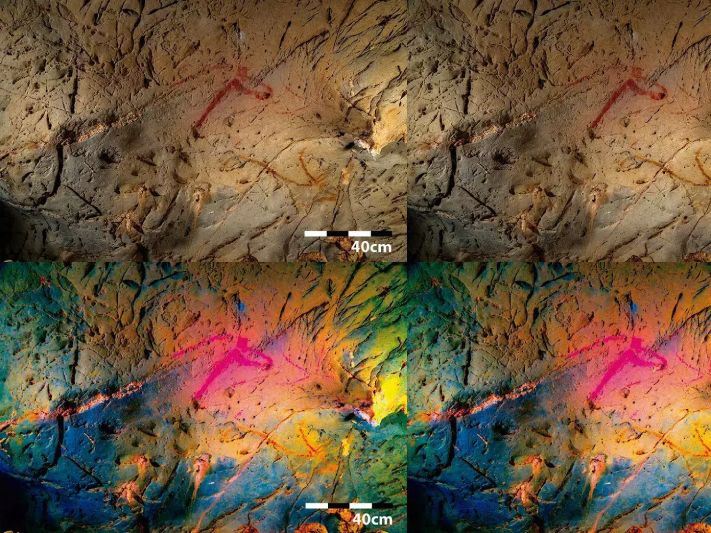
Hidden Palaeolithic Cave Drawings Revealed in 3D
- Science
- September 9, 2023
Using an improved photography technology, archaeologists have unearthed fresh Palaeolithic animal paintings from tens of thousands of years ago that were concealed in a cave.
Using an improved photography technology, archaeologists have unearthed fresh Palaeolithic animal paintings from tens of thousands of years ago that were concealed in a cave.
The north-central Spanish cave known as La Pasiega contains around 700 paintings that were initially uncovered by anthropologists in 1911.
The majority of the time, scientists thought of them as two-dimensional drawings. However, the ancient painters really included 2D details that are insufficient to convey the bumps, dips, and crevices of the rocks into their works of art.
To view the cave art in a novel new way, a group of scholars recently employed a method called stereoscopic photography. In August, they published the findings in the journal Antiquity.
Stereoscopic photography creates the appearance of three dimensions by combining two distinct images.
“The artists played with the lights and shadows produced by the volumes of the cave walls,” archaeologist Raquel Asiain, lead author on the paper, told Insider via email.
For instance, the horse’s chest can be defined by a gap in the wall. Tracings or sketches may not capture the subtle details in rocks that 3D photos can.
An old method unearths fresh information
Stereoscopic photography itself has been around since the 1800s. Its use in View-Masters, a children’s toy that delivers different images to the left and right eyes in order to create the illusion of three-dimensionality, may be the most well-known.
Similar methods were employed by Asiain and her co-authors, who took two photos 2.5 inches apart to replicate the typical spacing between a human eye’s pupils.
They prepared the photos for 3D glasses or virtual reality devices using applications like Photoshop and DStretch.
Three additional figures that had never been seen previously could be found among the cave’s walls after the scientists were able to view the artwork in three dimensions.
Two horses and an aurochs, an extinct kind of cattle, were also depicted.
“Those figures were always there, but possibly the way of studying them kept them hidden,” Asiain said.
“The most exciting thing we have discovered is that the way artists used the natural shapes of rocks changed over time,” Asiain said.
The more recent drawings included more of the characteristics of the rocks and just required a few extra painted lines to depict the animal silhouettes.
According to Asiain, the art can make viewers feel a connection to the creators and help them see how similar they were.
“We do not know the messages they wanted to transmit or their purpose,” she said, but she believes they sought beauty in these drawings.